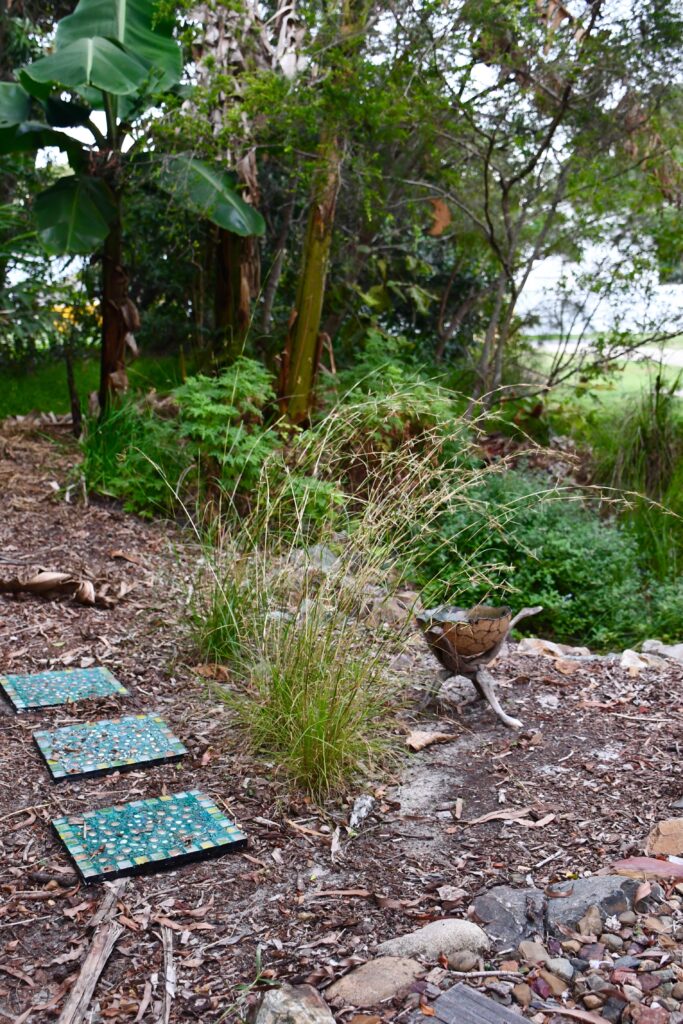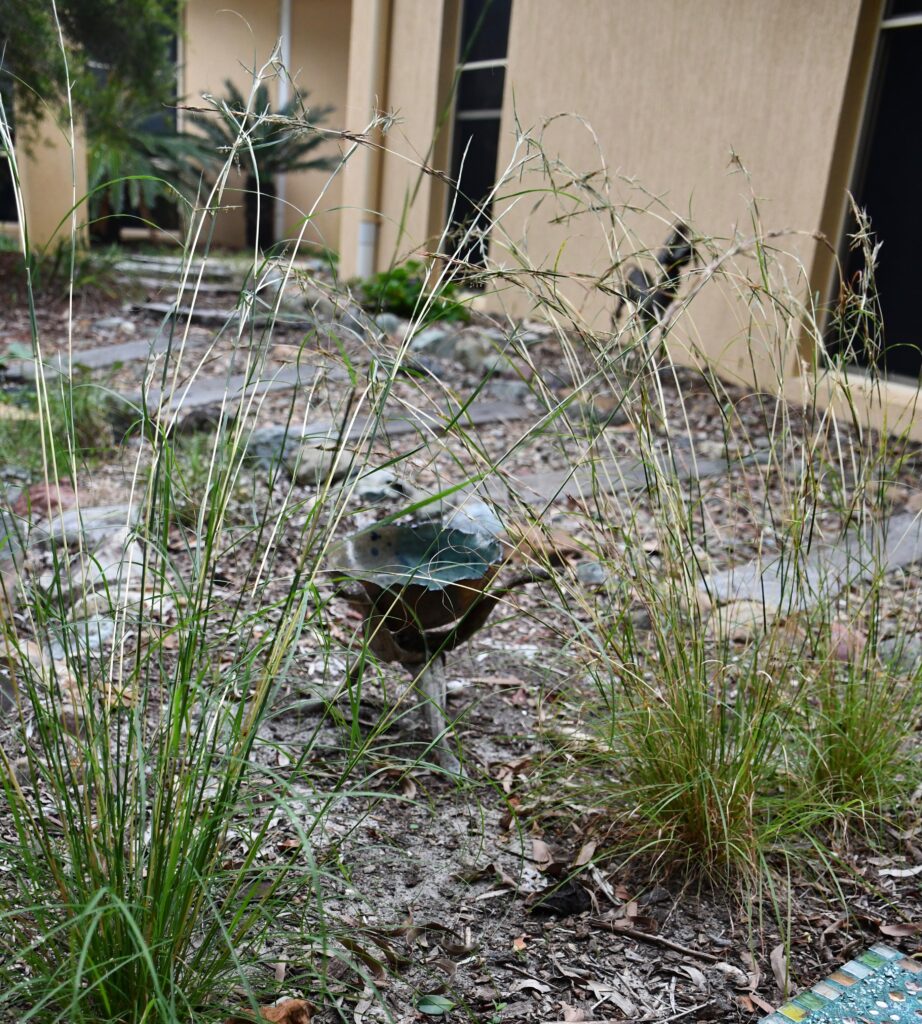‘Zeroscaping’ with our local natives: A benefit of living in Marcus Beach where natural vegetation was left on the blocks at the time of subdivision
Sometimes nature does its own thing in a garden that has been left undisturbed. These Barbed Wire Grass clumps grew from wind blown seed along my garden path. All they needed from me was a little water to see them though a dry patch.
Cymbopogon refractus is a clump-forming perennial that is 1m in height when in flowers, from December to March. It is most notable for its seedheads, which look like barbed–wire, hence the name: Barbed Wire Grass.
It grows in woodlands and grasslands in full sun to partial shade and is widespread on poor or low nutrient soils ranging from sandy to clay. Locally it can be seen on the edge of the the Marcus Section of the Noosa National Park on the southern Mahogany Drive edge, where it reappeared after MBBA Bushcarers cleared out Asparagus fern.
In a garden setting, it makes an unusual edging for a path, could be grown in swathes or used as the part of a layered planting. This grass needs no fertilising, can be cut back after is flowers and it easy to grow and maintain.




